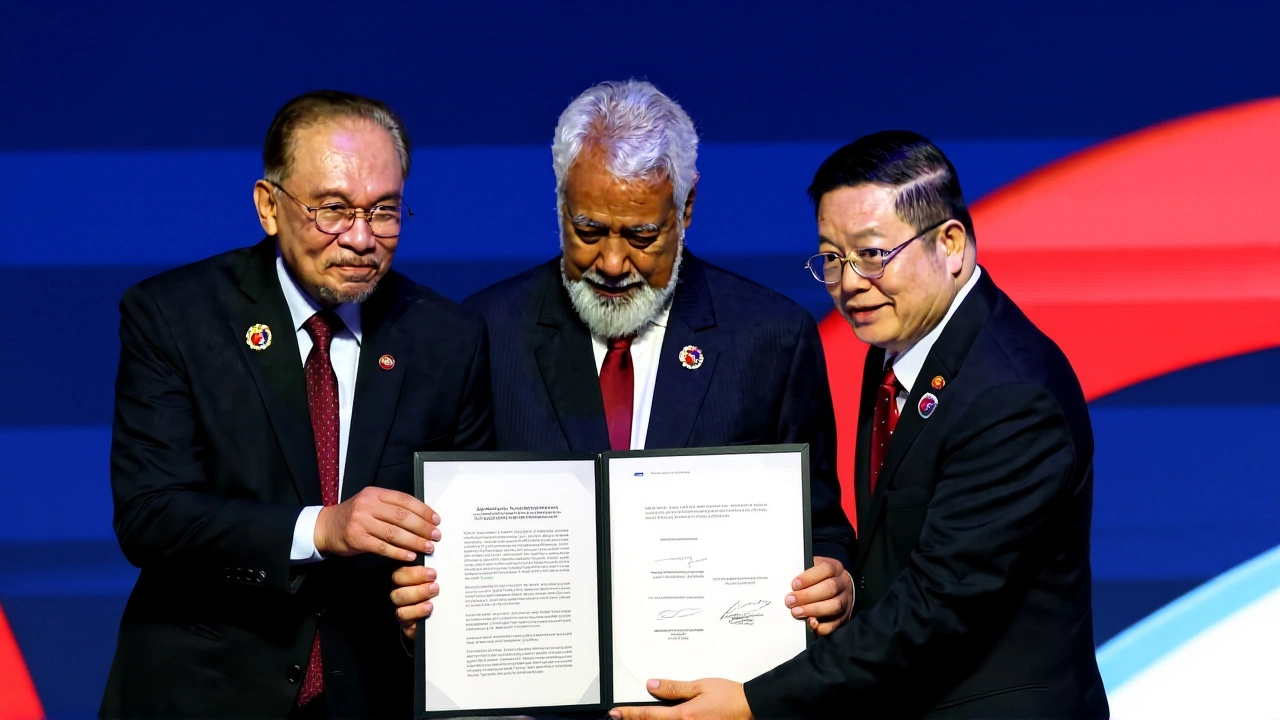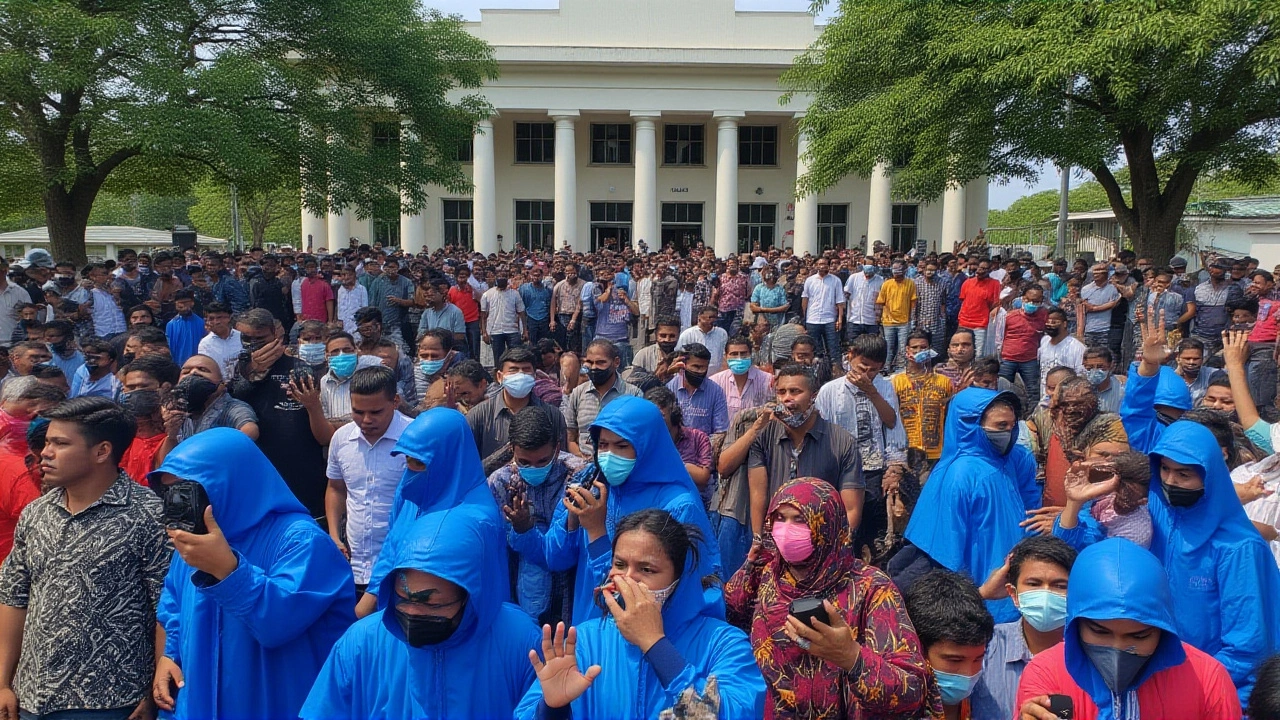On September 15, 2025, the streets of Dili erupted in a roar of protest—not from veterans of independence, but from teenagers and twenty-somethings who’d never known Portuguese colonial rule. Around 2,000 university students and young activists, mostly born between 1997 and 2012, gathered outside the National Parliament of Timor-Leste, demanding one thing: scrap the luxury SUVs and lifetime pensions lawmakers had voted themselves. By September 17, they’d won. But this wasn’t just about cars and pensions. It was about dignity. And it was just the beginning.
When the Streets Became the Parliament
The spark? A quiet legislative move in August 2025 to allocate $4.2 million for 87 new luxury SUVs for MPs, former presidents, and ministers—while public hospitals lacked basic medicines and schools had no textbooks. The pensions? A lifetime stipend equal to 80% of their final salary, even for those who served less than five years. To many young Timorese, it felt like theft. "They call themselves heroes," said Konfrontu Vencer, a 22-year-old organizer from Universidade Nacional Timor Lorosa’e, in an interview translated from Tetum. "But the real heroes are the mothers walking five kilometers to fetch clean water. The teachers paid $50 a month. The Maubere people—still waiting for the freedom they were promised." The protests exploded on social media. TikTok clips of students chanting in Tetum and Portuguese, Facebook live streams showing tear gas drifting over the parliament steps—these weren’t just updates. They were mobilization tools. Within hours, the hashtag #TimorLesteRising trended across Southeast Asia. By September 16, police blocked access to the parliament grounds. Protesters responded by burning tires. Tear gas filled the air. At least 12 students were arrested, held for six hours, then released without charge. Videos of bloodied faces and broken glasses went viral. The government’s response backfired. Public sympathy surged.A Presidential Paradox
President José Ramos-Horta, Nobel Peace Prize laureate and veteran of Timor-Leste’s independence struggle, posted a video on Instagram on September 18: "I agree with the youth. Their anger is justified." But then came the twist: "Foreign agents are behind the violence," he claimed. "They want to destabilize our young democracy." The protesters didn’t buy it. "We know who our enemies are," read a statement from the student coalition. "They wear suits, not masks. They sit in the parliament, not in the shadows." Ramos-Horta’s accusation was widely seen as a distraction. The National Congress for Timorese Reconstruction, the Democratic Party, and Enrich the National Unity of the Sons of Timor—all major political parties—publicly condemned the car purchases as "a betrayal of public trust." Even within the ruling coalition, whispers turned into open criticism.
The Victory—and the Next Battle
On September 17, after 48 hours of escalating pressure, parliament voted 43-1 to repeal the lifetime pension law and cancel the SUV procurement. It was a stunning reversal. A victory for street power over backroom deals. But the youth didn’t celebrate for long. On September 25, they returned. Not to demand more. To make sure the law was actually changed. President Ramos-Horta had already signed the repeal into effect—but activists wanted proof it was irreversible. They held a silent vigil outside parliament, holding signs that read: "We didn’t win because you were good. We won because you were scared." "This isn’t over," said Konfrontu Vencer in a follow-up interview. "They’ll try to pass the same thing under a different name. We’ll be watching." Their new targets? Repealing Article 14 of Timor-Leste’s Public Assembly Law, which requires protesters to obtain permits 72 hours in advance—a rule that effectively criminalizes spontaneous dissent. And demanding that 15% of the national budget, not the current 8%, go to health, education, and housing.Why This Matters Beyond Timor-Leste
Timor-Leste is barely 24 years old as an independent nation. It was born from blood, with over 1,000 killed during the 1999 independence referendum and an estimated 100,000 dead under Indonesian occupation. For years, the narrative was: "We suffered. Now we build. Trust the leaders." But Gen Z—raised on smartphones, global news, and YouTube documentaries—doesn’t trust that narrative anymore. They see how oil revenues, which once brought $10 billion into the Sovereign Wealth Fund, now fund luxury vehicles while 41% of the population lives below the poverty line, according to the World Bank. "This is part of a regional wave," noted Ato 'Lekinawa' da Costa, editor of Neon Metin. "In Indonesia, in the Philippines, in Thailand—youth are using digital tools to bypass traditional power structures. They’re not waiting for elections. They’re forcing change now." Amnesty International USA called the movement "a landmark in Asian civil society," while the International Socialist Alternative framed it as "a rejection of capitalist decay masquerading as development."
What’s Next?
The government has promised to review the protest law by December 2025. But the youth aren’t waiting. They’ve formed a permanent coalition called Timor Feto (Timor Youth), with regional chapters in Baucau, Maliana, and Oecusse. They’re training volunteers in digital security, legal rights, and nonviolent resistance. Their next action? A nationwide "Budget Transparency Week" in November, where they’ll map every cent of public spending in 13 districts. "We’re not rebels," said a 19-year-old student holding a sign that read, "We’re the future they tried to ignore." "We’re just the first generation who refused to inherit their mistakes."Frequently Asked Questions
How did Gen Z in Timor-Leste organize so quickly without traditional leadership?
They used encrypted messaging apps like Signal and Telegram for coordination, while Facebook and TikTok spread visuals and slogans in Tetum and Portuguese. Unlike past movements led by elders, this one had no single figurehead—just decentralized hubs of students in Dili’s universities who shared resources, legal advice, and protest tactics in real time. The lack of hierarchy made it harder for police to arrest leaders or shut down the movement.
Why did President Ramos-Horta blame foreign interference?
Ramos-Horta, a veteran of Cold War-era diplomacy, may have been attempting to deflect blame from his own government’s unpopularity. His claim echoed tactics used by authoritarian regimes across Asia to discredit domestic dissent. But with no evidence presented and no foreign agents identified, the accusation was widely seen as a red herring—especially since the protests began before any external actors could have influenced them.
What’s the connection between these protests and Timor-Leste’s oil wealth?
Timor-Leste’s economy is 90% dependent on oil and gas revenues, mostly from the Greater Sunrise field. The Petroleum Fund, created in 2005, holds over $17 billion—but only $1.2 billion was spent on social services in 2024. Meanwhile, politicians approved $4.2 million for SUVs. Young protesters see this as a betrayal: oil was supposed to fund education and healthcare, not luxury cars for those who never fought for independence.
Are these protests likely to continue beyond pensions and cars?
Absolutely. The movement’s core demand isn’t policy—it’s accountability. Protesters are now pushing to repeal restrictive protest laws, demand transparency in public spending, and create youth representation in parliament. They’ve already formed a permanent network, Timor Feto, and plan nationwide audits of government budgets. This isn’t a flash in the pan—it’s the birth of a new civic culture.
How does this compare to past protests in Timor-Leste?
Previous mass protests, like the 2006 crisis or the 2018 demonstrations over corruption, were led by veterans or opposition parties. This time, it’s students—many born after independence—who organized without party backing. They didn’t ask for permission. They didn’t wait for elections. They used digital tools to bypass traditional power structures, making this the first truly grassroots, youth-led uprising in Timor-Leste’s history.
What role did social media play in the success of these protests?
Social media turned local grievances into a national movement. Videos of police violence went viral within minutes, triggering donations for legal aid and medical supplies for injured students. Hashtags like #TimorLesteRising and #NoLuxuryCarsForPoliticians trended across Indonesia and Australia, drawing international attention. Without TikTok and Facebook, the protests might have been crushed quietly. Instead, they became a global symbol of digital-age resistance.
